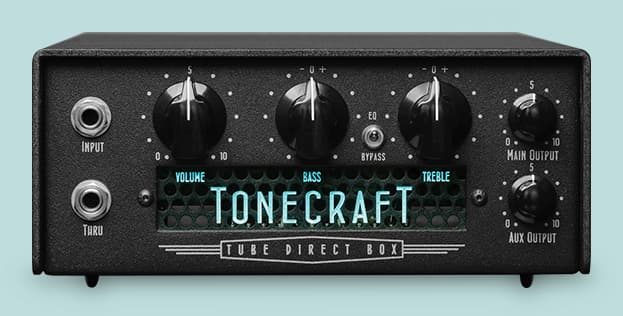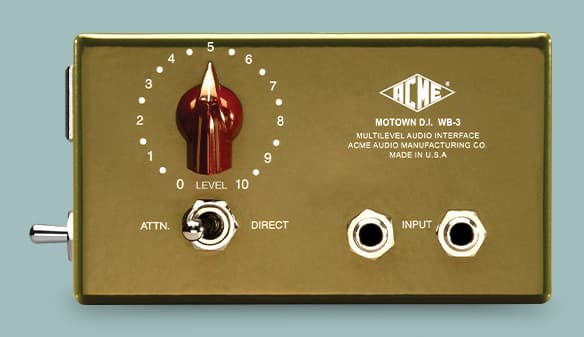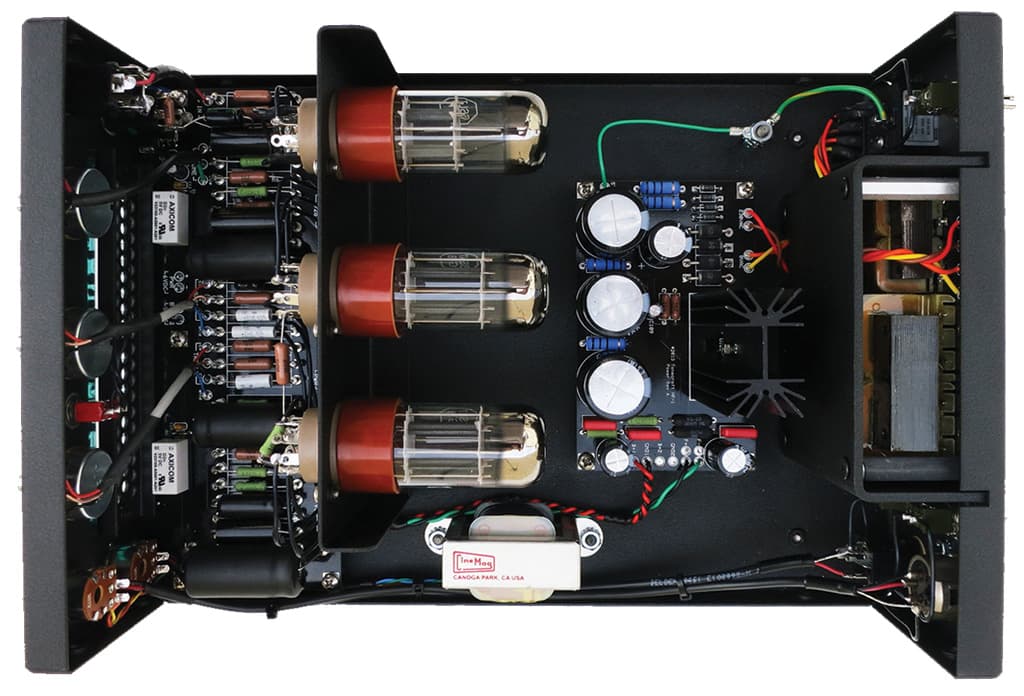
DI Showdown
We pit one of the earliest passive DIs ever made against the latest all-tube, standalone tone shaper. Tonecraft 363 Tube DI Vs Acme Motown WB-3 DI.
Its not every day a brand new DI turns up on your doorstep, so it was quite a surprise when the good folks at Mixmasters sent me a box containing not one but two very different DIs to review. Little did I know this was to be the beginning of an epic battle: tubes versus transistors, gain versus attenuation, feature rich options versus minimalist simplicity, David versus Goliath if you will. Could there be one clear winner?
INJECTION CORRECTION
For most of us, the direct injection box sits in a somewhat unfancied corner of the audio universe; well beneath the level of desirable microphones and outboard devices but just above the purely functional attraction of patch bays and cabling. I suspect we should all care about DIs a lot more than we do, especially when you consider how many direct injection signals make up the very bone structure of our bottom end in mix after mix courtesy of the electric bass guitar, not to mention the capture of keyboards and other 1/4-inch jack-equipped, high impedance sources. It would be interesting to know what devices the average AT reader uses as their main DI solution. If it’s something cheap and cheery, you may find you pay a high price come mixdown. The Tonecraft 363 Tube Direct Box and the Acme Motown WB-3 DI both answer the direct injection question in different ways, and both these answers should give readers food for thought if they are in the habit of plugging straight into their digital interfaces.

NEED TO KNOW
Tonecraft 363 Tube DI

NEED TO KNOW
Acme Motown WB-3 DI
TONECRAFT 363 TUBE DIRECT BOX
Tonecraft is a relative newcomer and its debut product is the well thought out and very comprehensive Tube Direct Box. This is quite a hefty and pro-looking black desktop (or floor sitting) device that takes up about half of a two RU space and is quite deep to accommodate the hand-wired component layout. The build quality is excellent, with aesthetics to match. The unit utilises chicken head knobs and stainless steel switches that, along with the thick steel plating, give the unit a real presence. Powering up the unit reveals a lovely light green backlit window with clear labelling of the main controls — quite a funky and unique look that works a treat. The key features here are the 6SL7 and two 6SN7 tubes, the two-band Baxandall EQ bands and the provision of dual outputs. Main and auxiliary outputs are on XLR and TRS respectively and also feature independent continuously variable gain and ground lift (on switches round the back). The front panel features large continuously variable volume control, bass and treble controls, EQ bypass, TRS input and an additional ‘thru’ TRS socket. The Baxandall equaliser is a classic design that utilises an active tone stacking circuit, and here there is a generous +/- 20dB of gain enabling some quite dramatic tonal shaping. The dual output encourages studio users to work some parallel processing into the DI chain with compression being the obvious option. In a live setting the separate outputs can be sent to amplifiers and FOH. In this regard the separate gain controls for these channels mean greater flexibility in the gain structure, a nice touch from Tonecraft.

I suspect we should all care about DIs a lot more than we do, especially when you consider how many direct injection signals make up the very bone structure of our bottom end
BASS IN YOUR FACE
Upon firing up the 363 Tube Direct Box for the first time it was immediately clear this was a quality piece of gear. Bass signals were clear and round with that unmistakeable vividness valve gear can impart on a signal. There’s tons of gain on hand and then of course there’s the EQ. It’s hard not to immediately reach out and start tweaking and the results are definitely very gratifying. Treble tones are sweet and defined while not being too strident, while increasing bottom end does marvellous things to the scale of a bass sound. Not to be discounted is the idea of going the other way and pulling out some top and bottom leaving a distinctive midrange tone. Either way there’s a ton of useable tone on offer and experience will tell you when to tinker or indeed when to bypass the EQ (as I did on a Perch Creek session) where a bass tone is sitting perfectly right off the bat. Keyboard tones are equally at home running through the Tonecraft. My Korg MonoPoly sounded super fat through this DI and adding a bit of top and bottom gave the sounds new tonal dimensions. Similarly, DI’d electrics worked really well here, with great clarity and weight making this another good creative option. Interestingly, the folks at Tonecraft have developed the Boostmate adapter to allow the 363 to function as a mic preamp (predominately for dynamic mics), and this further extends the capabilities of what is a very sweet piece of kit.
ACME MOTOWN WB-3 DI
Where Tonecraft has gone for a comprehensive feature list, Acme has come in with a pocket rocket that is all about vintage sonic vibe. Not much larger than a standard guitar effects pedal, the Motown WB-3 comes in an army issue khaki gloss finish and sports just the one brown chicken-head knob for level attenuation. Next to this a switch selects the use of this continuously variable attenuation or bypasses it to run the signal at full gain. Two 1/4-inch jack inputs complete the top of the unit’s controls while round the side are an XLR output and ground lift switch. Being a passive unit, the Motown WB-3 must use another source for downstream amplification so the unit is typically patched into a microphone preamp to generate proper recording levels. This makes the Acme a very different beast to the Tonecraft and in some ways quite hard to compare, as the tone of the Acme will always be influenced by the choice of preamp it passes through. The Acme design uses two painstakingly recreated custom wound transformers (the Triad A-11 and 12J) that are key to recreating the direct injection Motown bass sound of the ’60s and ’70s. Where Tonecraft opted for the active approach, Acme has headed down the passive path keeping the design compact and simple.

TONE RIDER
My first recordings with the Acme WB-3 Motown DI were in tandem with the built-in mic preamp in my UA Apollo interface. I found the sound immediately engaging and enjoyed playing bass through this setup. When I switched to using the Chandler Redd.47 mic pre it did, however, take things to a whole new level. This set-up absolutely rocked and put me in a really great place for vibey bass performances. These takes needed no EQ and sat in the mix perfectly. Given that the Redd.47 is a very pricey mic pre this probably gave the Acme an unfair advantage over the Tonecraft, though I did also get great results passing the Motown DI through a much more affordable API 512b preamp too. I did some experiments recording DI’d guitar through the Redd.47 and exploiting that unit’s propensity to break up under load. It was a tricky business tweaking the gain structure between the attenuation on the DI and I/O controls on the preamp, but there were some really interesting tones there that sat up beautifully in the mix and spread my guitar tone options quite a bit wider than usual.
SHOWDOWN LOWDOWN
In the end, choosing between these units really comes down to how you like to use DIs. The Tonecraft is a thing of beauty and looks built for the long haul. It’s a standalone solution for all sorts of direct recording situations — you put it on the floor for a session and it delivers lots of clean, powerful tone and your work is done. The Acme is more of a funky addition to an existing preamp or set of preamps, lending some of that vintage spice to whatever hits its circuitry and working some subtle magic in the gain structure there. Putting these two units head to head was a tricky test and it often came down to the particular song or part I was working on. I loved the Tonecraft’s grunt and EQ options for more straight ahead, cleaner tones. More often though, I chose the Acme for the way it’s sound matched my playing style and delivered an enhanced retro, funky kind of result. The downside of the Acme however was that I lost a preamp channel which did balance out it’s relative affordability compared to the 636.
Having either one of these DIs in your studio will give you an expanded range of tonal choices and make you realise what you are missing out on when you plug straight into a recording interface’s preamp or an average preamp’s DI circuit. Once you get a taste for what a purpose-designed DI can do, it’ll be hard to go back to cutting that particular corner. For the serious session bass player the Tonecraft is a great studio and live tool while the Acme will bring a big smile to many a funk, soul and rock bassist’s face while allowing an extra degree of play with any studio’s preamp collection.
















RESPONSES